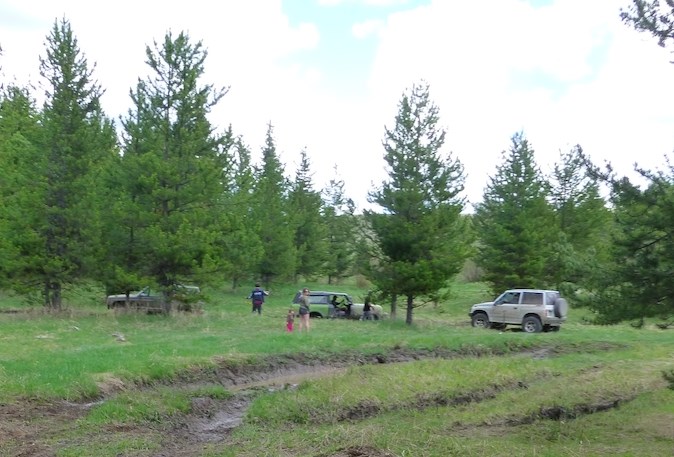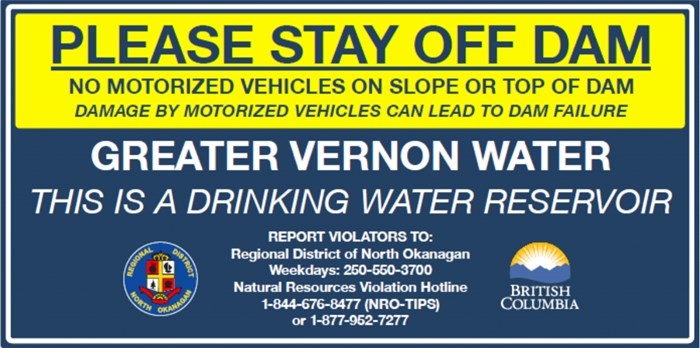
Mud bogging and other off road vehicle activities are creating concern for the North Okanagan's water reservoirs.
Image Credit: Regional District of North Okanagan
May 15, 2015 - 4:34 PM
VERNON - Efforts are being stepped up to educate and enforce when it comes to the rules of the road in and around Vernon’s drinking water reservoirs.
An increasing number of off-road vehicles in areas like the Aberdeen plateau are causing concerns for water quality, and security, says regional district Water Quality Manager Renee Clark.
“We have a lot of vehicles mud bogging and trying to do hill climbs up the backsides of dams,” she says. “The consequences if the dam blows are high, it could destroy environment, or property downstream. And as a water source, we rely on it heavily. To lose it would be horrific.”
When off road vehicles drive on the dams, it degrades them, Clark says. Ruts left behind in the dirt can fill with water and create tunnels in the dam. There have also been issues with people shooting holes into utility infrastructure and signage in the area.
Clark says there have been more off road vehicle issues around the Grizzly, Aberdeen, Haddo, and King Edward dams since they were kicked off another popular site, Postill Lake.
“The Ministry has closed it down so now people are moving to wherever they can congregate,” Clark says.
New regulations for off road vehicles went into effect April 15 and mean those caught damaging Crown land can now face up to $100,000 in fines, a year in jail, or both. Clark says the new legislation means natural resource officers can enforce laws around vandalism on dams and utilities. A new tip line, 1-844-676-8477 also allows members of the public to report activity when if they see it happening.
“People, if they’re as concerned as we are, they have the ability to report it,” Clark says.
Because the dams are on Crown land, multi-use activity is allowed, and Clark says most people are respectful of the environment and water supply. She also suspects many people might not be aware the lakes are a major water source for the region.
Another frequent problem posing concerns for water quality is when campers dig their own toilets, Clark says. There are some designated forestry sites with outhouses which contain the waste in cement and are pumped out, but many sites do not have such facilities.
“We are finding a lot of toilet paper and people digging their own toilets around the reservoir,” Clark says.
The water utility has been working with natural resource officers, and Clark says there will be a definite presence this summer, especially on long weekends.
“Something we are really striving towards is getting people more informed about those drinking water reservoirs,” she says.

Watch for these signs around North Okanagan reservoirs.
Image Credit: Regional District of the North Okanagan
To contact the reporter for this story, email Charlotte Helston at chelston@infonews.ca or call 250-309-5230. To contact the editor, email mjones@infonews.ca or call 250-718-2724.
News from © iNFOnews, 2015